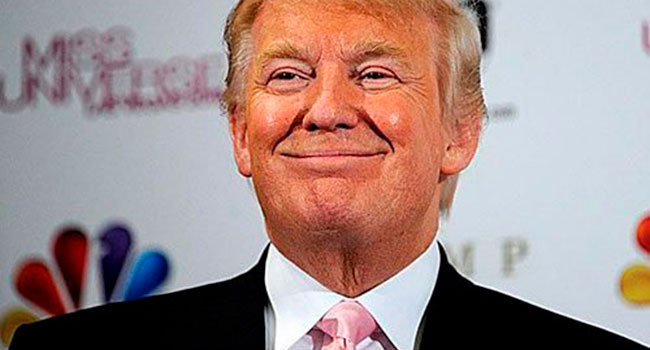 Let’s start by noting my track record regarding Donald Trump. I got it wrong in 2016.
Let’s start by noting my track record regarding Donald Trump. I got it wrong in 2016.
I initially gave him little chance of winning the Republican nomination. I even speculated about his dropping out before voting began.
Then I was astonished to see him win the general election. It wasn’t a matter of believing the hype about Hillary Clinton’s invincibility. It was just that Trump’s manifold flaws seemed overwhelming.
So take what follows with an appropriate degree of caution.
And another word to the wise. As stressed in previous columns, the national polling that occupies so much media space is essentially irrelevant.
Winning the U.S. presidency isn’t about running up the score in California. What matters is having sufficiently strong and strategically located regional support during Tuesday’s election to make it to the magic 270 electoral college votes. The U.S. is a federation and presidential elections aren’t national plebiscites. In a geographically polarized polity, they’re won or lost in a handful of battleground states.
In 2016, Trump took six states that Barack Obama had won in 2012: Florida, Pennsylvania, Wisconsin, Michigan, Ohio and Iowa. These accounted for 99 of his 306 electoral votes. Assuming he manages to hold onto everything else he won in 2016 – a big assumption – this means he can afford to lose 36 of those votes and still hit 270.
How is Trump doing?
As of writing, the Real Clear Politics (RCP) polling average has him trailing Democratic Party nominee Joe Biden in five of those six states and tied in Ohio. If that scenario materializes, Trump would drop between 81 and 99 electoral votes. He’d be toast.
Mind you, the deficits in Florida and Iowa are whisker-thin and it’s plausible that Trump will win both, plus Ohio. That would whittle the electoral vote loss down to 46, which is still 10 too many.
Winning Wisconsin (10 votes) would barely close the gap, while either Pennsylvania (20 votes) or Michigan (16 votes) would provide a tad more comfort.
Of the three, Pennsylvania looks most doable. Trump was down more than seven points in mid-October but the RCP gap has narrowed to less than four.
Then there’s Trafalgar.
Trafalgar is a relatively new polling outfit that’s considered Republican-friendly. People like polling guru Nate Silver look at them suspiciously.
There’s a wrinkle, though.
Trafalgar got Michigan and Pennsylvania right in 2016. It was the only pollster to do so.
They also called the correct winner in Florida’s 2018 gubernatorial election. Almost all of the other pollsters got it wrong, some rather spectacularly.
With respect to Trump, Trafalgar’s view is that pollsters tend to underestimate the level of his support, in large measure because of the social desirability issue. In simple terms, people don’t necessarily tell the truth.
Their reluctance to do so comes from a fear of being “judged by somebody on the phone that they don’t know. They’ve seen all this stuff of people being shamed for their opinion, people losing their jobs.”
Trafalgar’s methodology seeks to compensate in a number of ways.
Some of it comes down to selection of a likely voter model. Some of it is sample size – Trafalgar believes that others often use samples that are too small. And some of it is a function of restricting the number of questions such that they can be answered in a matter of minutes.
So how does Trafalgar see 2020?
They have Trump marginally ahead in Pennsylvania, Michigan and Florida, more comfortably so in Ohio, and barely behind in Wisconsin. Trafalgar’s founder, Robert Cahaly, even went so far as to recently predict a Trump victory. His best guess was a final electoral college tally in “the high 270s, low 280s.”
But let’s go back to the earlier assumption that, leaving aside the six Obama states he’d flipped, Trump would hold on to the rest of his 2016 winnings. As noted, it’s a big assumption.
Indeed, the RCP averages indicate just how iffy that proposition is.
North Carolina (15 votes), Georgia (16 votes) and Arizona (11 votes) are all in toss-up mode. Should Trump lose any of them, his potential path to 270 becomes even more precarious.
Whereas Trump was able to successfully thread the needle in 2016, the odds against him doing it again are substantial. So the smart money is on exit Donald Trump.
Just don’t spend it yet.
Troy Media columnist Pat Murphy casts a history buff’s eye at the goings-on in our world. Never cynical – well perhaps a little bit.
For interview requests, click here. You must be a Troy Media Marketplace media subscriber to access our Sourcebook.
The views, opinions and positions expressed by columnists and contributors are the author’s alone. They do not inherently or expressly reflect the views, opinions and/or positions of our publication.


